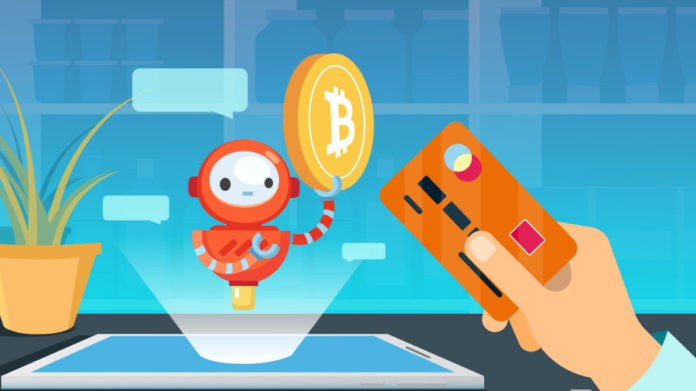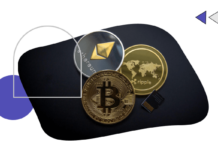As new technology develops and affects many areas of everyday life, some behaviors alter in response to the new environment. The same thing has occurred with payment patterns, as more alternatives than actual currency have been accessible to consumers. For many years, the preferred ways of spending money have evolved gradually, bringing us closer to a cashless world with each passing year. Even though the world will almost certainly never completely accept such a scenario, we are rapidly approaching the stage where those who utilize physical money are in the minority. In fact, as a result of the epidemic, we are on our way there far sooner than we had expected.
The necessity for actual money has decreased dramatically over the last year, as consumers are encouraged to utilize contactless payments wherever feasible to save time and money. It is an effect that is unlikely to be reversed, which means that digital currency will only grow more prevalent in the future. What precisely are the present payment patterns in the United States, and how are they evolving in this volatile environment, is a more pressing question.
E-Commerce Is Becoming A More And More Popular Method Of Shopping
People have resorted to the internet to fulfill their purchasing appetites due to lockdowns that have forced millions of people to remain at home. According to Capgemini’s study, the percentage of individuals who conduct most of their monthly shopping online has almost doubled since the pandemic outbreak started. A third of those surveyed chose cash on delivery as one of their payment options, compared to the rest of the population. It overlooks in favor of debit and credit cards, mobile payments, and online banking, among other conveniences,
That’s in keeping with what we previously knew about preferred payment methods in the United States, according to a 2019 study conducted by a third party. Before the pandemic outbreak, almost three-quarters of those surveyed in the United States used credit or debit cards as their primary mode of payment. The only finding that varied significantly from Capgemini’s study was the usage of mobile devices, which placed below the use of actual currency at 6 percent to 15%. Considering the virus’s impact, as well as the fact that physical payments make less sense in the age of e-commerce, it’s clear why these alternatives relegate to the backburner.
It’s not always the case that when something new becomes accessible, people are ready to take advantage of it right away. People’s ability to spend their money via the use of technology has advanced significantly in recent years. QR codes and digital wallets were alien ideas just a few years ago, and many customers are still wary about using them now, despite their increasing popularity. On the other hand, it seems as if the epidemic has had a minor impact on views in this regard. According to the Capgemini study, individuals have expanded their horizons in the past year, with many people experimenting with other payment options for the first time. According to the survey, 27 percent of respondents attempted QR payments, and 35 percent linked a card to their digital wallet. Furthermore, 41 percent of consumers began utilizing contactless payments, likely because many shops promoted it as the preferred payment method.
According to the study’s findings, the figures for QR codes represent global use rather than just the United States. Given that firms like Paypal are making these types of alternatives more available to consumers, it is understandable that more and more individuals are beginning to use them.If you know what bitcoin trading is and want to earn more profit, check out https://cfd-formula.com/
Cryptocurrency Is Gaining Popularity, But It Is Still A Relatively Unknown Entity
Another sector that is starting to experience transformation is the world of cryptocurrencies. This payment mechanism, like QR codes, is expected to see an increase in popularity due to plans put in place by companies such as PayPal for the year 2021. However, before we see a substantial increase in interest in cryptocurrencies such as Bitcoin among US residents, several factors must alter. Educating the public about cryptocurrencies and why it’s a good investment choice, for starters, should be a priority. As things stand, just 5 percent of Americans are aware of the monetary worth of Bitcoin, with almost half of the population being utterly unaware of the currency in general. No single group, on the other hand, seems to be incredibly well-informed.
Taking Texas as an example, the proportion of individuals aware of cryptocurrency invested in it and are interested in investing in it is higher than the national average. These figures, however, might be considerably higher if more people were aware of the existence of this cryptocurrency. It’s doubtful that this payment trend will significantly affect the United States until more information about Bitcoin and other cryptocurrencies becomes available to the public. On the other hand, positive change is still on the horizon, thanks to sensible investments that will increase its popularity in 2020 and services that will increase its commercial availability.
The Use Of Cash Is Decreasing, But It Will Not Completely Disappear
On the other hand, their numbers are rapidly diminishing, and the epidemic has further exacerbated this trend. That figure has reportedly dropped to 28 percent within a decade, opening the door for other alternatives to take center stage. Physical money is likely to remain a viable payment option indefinitely, particularly since some governments consider it unlawful to refuse to accept it as payment.








